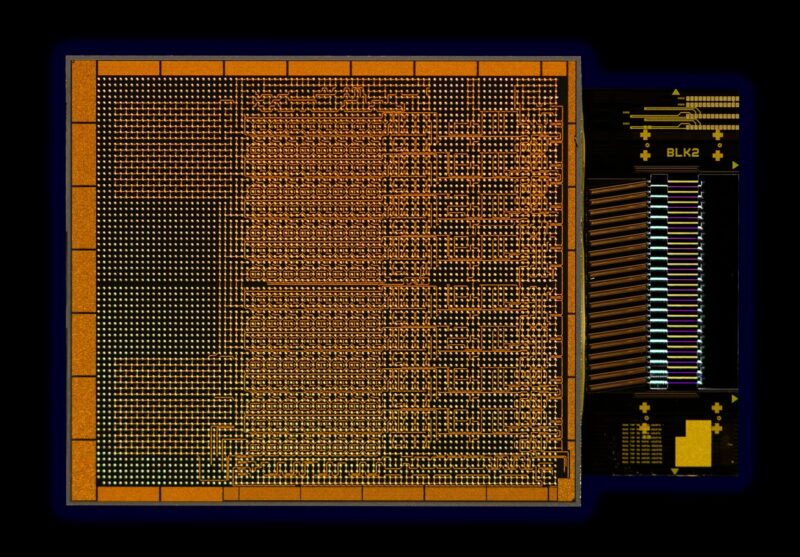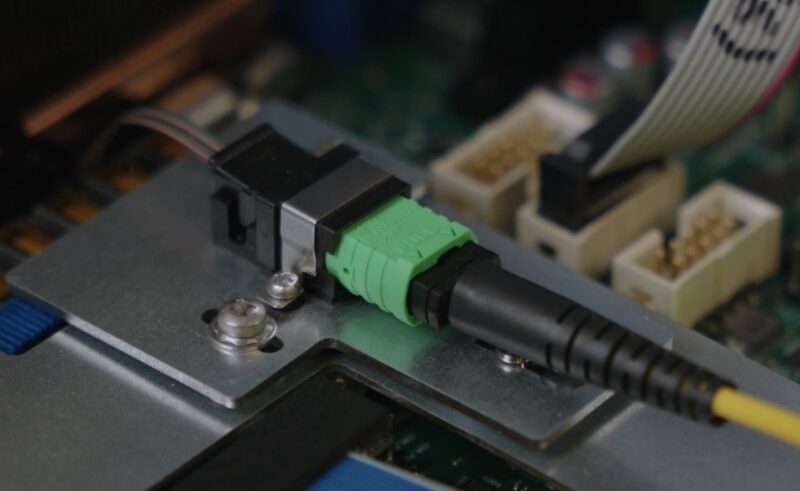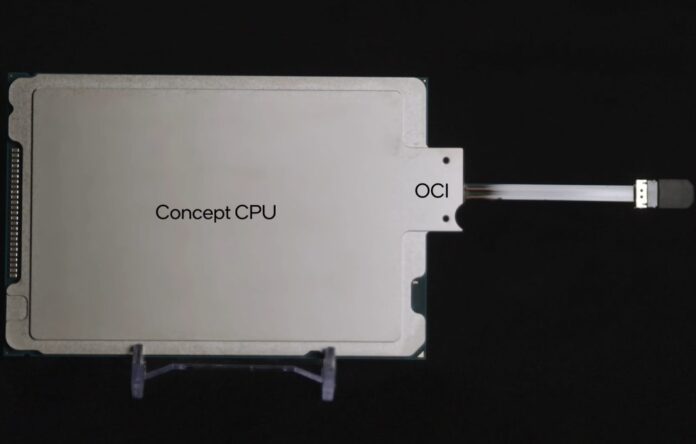Intel showed off a pretty cool piece of technology integrating an optical I/O chiplet with a CPU. The first iteration of the design is a fully integrated chiplet. Intel says its new silicon photonics DWDM optical chiplet uses only 5 pJ/bit versus 15 pJ/bit for pluggable modules.
Intel Optical Compute Interconnect Chiplet Demoed
Although Intel sold its Silicon Photonics pluggable business to Jabil, the company still has a SiPho team that is showing off its new optical interconnect chiplet.

The new chiplet combines a PIC and EIC onto the chiplet, and has lasers built-in instead of being external parts. Similar to how we see switching moving towards co-packaged optics (albeit there likely with an external light source), the next step in servers, especially AI servers, is to move optical interconnects on chip. Today’s AI servers generally have one or more interconnects that they use to communicate. Today, save for Intel’s Gaudi 3 and NVIDIA NVLink, we generally have a PCIe connection to a PCIe slot with an Infiniband or Ethernet NIC, then a pluggable optical module. Having built-in on-package optics allows this to happen without having to drive a signal out of the package, over PCB, into another card, chip, optical cage, pluggable module, and so forth. As a result, there are substantial power savings for doing this.

Previously, Intel intended to introduce “Lightbender” a chiplet based optical module that was to fit in about the power envelope of a HBM package. The idea was that using co-packaged optics, getting data in and out of chips can be done at a lower power cost and with a lot of bandwidth.
Final Words
What is really interesting here is that Intel is looking to fully integrate everything from the light source onto its chiplet. It also says that it has a new silicon photonics fab process node and is working with customers to integrate future versions. Intel also says it has a roadmap to scale the interconnect from the 2Tbps “Mirror Bay” generation to 32Tbps.






That is pretty cool. Perhaps the day will come when we have fully optical switches, and this chiplet or it’s descendents show up in GPUs and SSDs as well. Now _that_ would enable disaggregation.
Wake me up when we have Optical PCIe. Being able to connect SSDs and other PCIe devices using an optical cable instead of power hungry and flakey copper cables would be a benefit. These devices all have separate power connections when connected in this fashion anyways.
How many iterations did we go through before we landed on the MCIO connector and cables with embedded retimers? Could have gone optical instead.
what about latency versus copper interconect?
@Nicolai Syvertsen: There was an optical PCIe demo that took place at their SIF forum two weeks ago. Looking at that for an official option for Gen 7 and likely to go mainstream beyond that. However until photonics really takes off, the transition to optical will be hamstrung due to the need for external media conversion and thus extra cost.
@an1jsk Should be decent as there is no media conversion. One of the lesser known things is that the actual signal propagation over copper is faster than through optical mediums (~0.7c vs. ~0.8c ) which makes it better for low latency applications. Just that the raw high clock speeds and relatively low voltages of copper wiring are preventing it from reaching meaningful distances. For IO like PCIe or processor interconnects, across a motherboard is a challenge for copper where as single mode optics can reach kilometers. Doesn’t matter how fast you are if you can’t reach your destination.